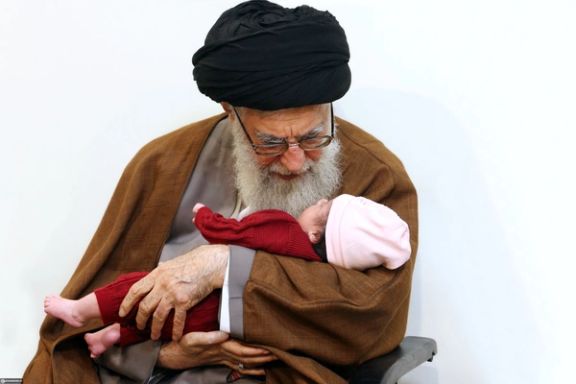Khamenei's Failing Hand: Abortion Rates Defy Iran’s Population Policy

A notable paradox in population dynamics has emerged recently in Iran.

A notable paradox in population dynamics has emerged recently in Iran.
On one front, the government aims to increase the population by two-fold – and as soon as possible. To achieve this, it has severely restricted abortion and contraception, and simultaneously promotes pregnancy and childbearing.
But, year after year, individuals are instead opting to have fewer children, standing in opposition to the government's ambitious population policy. In essence, Iranians have effectively countered Khamenei's population policy – and defeated its goals.
Abortion rate undermine Khamenei’s goals
One of the ways Khamenei’s policy has been thwarted is by Iranian women opting for abortion.
Estimating the precise number of abortions in Iran proves challenging. Nonetheless, a senior health expert with the Expediency Council suggests that both legal and illegal abortions total approximately 1.3 million annually, with intentional abortions accounting for around 530,000 cases. Other authorities offer estimates ranging from 250,000 to 650,000 cases per year.
These abortions are carried out either by private clinics or through the use of illegal pills available in the market. While today's younger generation is knowledgeable about contraception methods, the government has eliminated their accessibility from all public facilities in this field.

A policy driven by nefarious motives
The abortion policy of the Islamic Republic has been quite stringent, though not driven by Islamic Sharia prohibition or a culture of valuing human life. Instead, it has been driven by the aim to boost the population for the establishment of an Islamic empire – despite causing impoverishment and exacerbating the populace's hardships with annual inflation rates ranging around 50%.
Until the fetus reaches 4.5 months of gestation, there are typically no Shariah restrictions according to the fatwas issued by most Shia sources of emulation. In such cases, the mother isn't required to obtain a license and is obligated to pay an atonement. The new population law of the Islamic Republic of Iran, akin to its regulations on loan interests, contradicts fatwas.
Unlike many American conservatives, the authorities of the Islamic Republic do not take a moral stance against abortion nor emphasize the inherent right to life. Over the past 45 years, their focus has primarily revolved around execution, genocide, warfare, and bloodshed.
Their opposition to abortion stems from two primary motives: firstly, they view a large population as essential for achieving superpower status, which aligns with their overarching agenda, and secondly, they seek to maintain a vast army comprised of impoverished, uneducated, and vulnerable individuals for the perpetuation of their oppressive regime and involvement in endless regional conflicts. But, compared to their government, the general populace is more acutely aware of the country's resource constraints, such as limited access to safe water, education, and healthcare.
Khamenei battles ongoing population decline
In the last two decades, Ali Khamenei has expressed dissatisfaction with Iran's population control policies from the 1990s, aiming to counteract the ongoing decline in growth rates since the 1980s, where it stood at 3.91%, by striving to increase the rate from the 1.2% observed in the 2000s.
Consequently, following the enactment of the Family Protection and Youth Population Law in 2020, abortion can only be conducted legally with official permits.
Law vs. Reality
According to Article 56 of the Family Protection and Youth Population Law, an abortion without a license is punishable by fine, imprisonment, and revocation of the medical license, and the coroner’s office is responsible for filing the case for the applicants. The doctor of this office is in charge of reviewing the documents and completing the details of the case. In addition to the punishments stipulated in the Islamic Penal Code, the work license of a doctor, midwife, or pharmacist involved in abortion and their stewards will be revoked and they must pay a fine. But despite these punishments, underground and illegal abortions continue, with the government struggling to enforce its law. Easy access to abortion drugs has also contributed to high abortion rates.
However, societal trends have consistently shifted in the opposite direction. Iran's population growth rate has declined from 1.62% in 2006 to 1.24% in 2016, and approximately 0.7% in 2021. Certainly, around half a million individuals—comprising roughly one million births and half a million deaths—are added to the population annually. But, if current trends persist, the growth rate is projected to reach zero within the next seven years, thereafter turning negative.
The Family Protection and Youth Population Law and its various rewards and punishments for having children and infertility have not been able to change this trajectory. Paradoxically, even the prohibition of prenatal screening has not aided in decreasing abortion rates. The pervasive sense of economic hardship and despair regarding the future weighs heavily on the minds of mothers across all 31 provinces – with this overwhelming burden prompting them to undergo abortions despite the associated risks and financial strain, all of which are borne out of their own pockets.
Thus, Ali Khamenei and the Islamic Revolutionary Guards (IRGC) cannot rely on population growth to bolster their influence. To sustain their oppressive regime, they depend on maintaining a populace mired in poverty and unemployment. Their aspirations for empire-building hinge on depleting the resources of the people, impoverishing them for conflicts with Israel and America, and funneling billions annually to proxy groups and sympathetic governments in Syria and Yemen. Additionally, to support the Quds Force, they must rely on Shiite populations in Afghanistan, Pakistan, Iraq, and Lebanon. Ultimately, their pursuit of power relies on a strategy of impoverishment and manipulation that will also extend beyond Iran's borders.